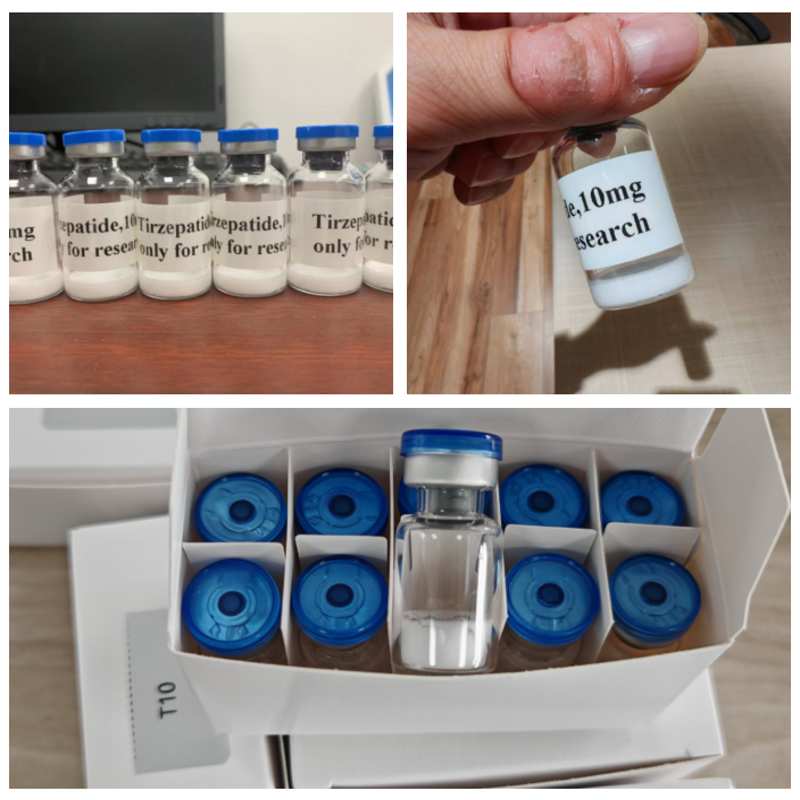-
Categories
-
Pharmaceutical Intermediates
-
Active Pharmaceutical Ingredients
-
Food Additives
- Industrial Coatings
- Agrochemicals
- Dyes and Pigments
- Surfactant
- Flavors and Fragrances
- Chemical Reagents
- Catalyst and Auxiliary
- Natural Products
- Inorganic Chemistry
-
Organic Chemistry
-
Biochemical Engineering
- Analytical Chemistry
-
Cosmetic Ingredient
- Water Treatment Chemical
-
Pharmaceutical Intermediates
Promotion
ECHEMI Mall
Wholesale
Weekly Price
Exhibition
News
-
Trade Service
Translator: Yuan Chunlei Zibo Hospital of Shandong Yiyang Health Group
Introduction: On September 19-23, 2022, the international endocrine field conference "2022 European Association for Diabetes Research Annual Meeting" was held
in Stockholm, Sweden in the form of "online + offline".
At the meeting, some scholars shared a topic titled "Reprogramming Gastrointestinal Cells: A New Strategy to Restore Endogenous Insulin Production in Diabetes?" " research report
.
Transforming gastrointestinal cells into β cells, "cell reprogramming technology" assists in the treatment of type 1 diabetes
Type 1 diabetes mellitus (T1DM) is an autoimmune disease
caused by damage to cell-mediated insulin-producing β cells.
β cell replacement as a therapeutic strategy is promising whether through cell differentiation or reprogramming of different cell sources
.
However, in order to defend against the supposed autoimmune attack of newborn β cells, β cells may be crucial to
renewable sources.
Interestingly, the gastrointestinal (GI) epithelium is a highly renewable tissue that has the potential to provide a constant source
of insulin-producing cells when reprogrammed.
Previous pancreas-related studies have found that after Pax4 is ectopically expressed, glucagon-producing α cells transform into functional β-like cells
through self-transformation.
Based on the high expression of glucagon-producing cells in the gastrointestinal tract, we sought to determine whether such cells can also transform into β-like cells
.
We used transgenic mice with Pax4 misexpression in pancreatic-producing hyperglycemic cells (Gcg_CreERT2: :P ax4OE) to assess the putative Pax4-mediated gastrointestinal L cell to β-like cell transformation
.
In addition, we implemented an ex vivo method based on mice derived colons to assess the function
of these neonatal β-like cells.
The results of the study are impressive!
In vivo ectopic expression of Pax4 in glucagon-producing L cells in the gastrointestinal tract causes them to transform into functional, insulin-producing β-like cells
.
We found that the only misexpression of Pax4 was sufficient to induce a significant decrease in glucagon, Gcg_CreERT2: the transcriptional content of :P ax4OE in the gastrointestinal tract (up to 98.
89% depending on the GI segment analyzed, P<0.
0001) favors the acquisition of β cell phenotype
.
Indeed, insulin-expressing cells in the gastrointestinal tract can be detected in Gcg_CreERT2::P ax4OE animal models (no insulin-expressing cells were found in the control animal group).
Thus, quantitative analysis by RT-qPCR found Gcg_CreERT2: :P a large increase in the content of insulin transcripts in the gastrointestinal tract of ax4OE (up to 5435.
5%, depending on the GI segment analyzed, P<0.
0001).
The lineage tracing method showed that all insulin-expressing cells came from L cells that had previously produced glucagon, indicating that glucagon cells converted to insulin-expressing cells
after Pax4 misexpression.
The characteristics of newly formed insulin-expressing cells in the gastrointestinal tract suggest that these cells exhibit most of the characteristics
of pancreatic β cells.
These include the expression of key β cytokines, the production and processing of insulin, and the expression of components of the glucose sensing mechanism as demonstrated by the improvement of glucose reactivity (P=0.
0135).
Finally, a colonoid-like functional test of mouse derivatives determined the ability of β-like cells in the gastrointestinal tract to release insulin under glucose stimulation (P=0.
000878).
Summary of this article
From this study, we conclude that the only misexpression of Pax4 may be sufficient to convert glucagon-producing L-cells in the gastrointestinal tract into functional β-like cells in vivo, so that the gastrointestinal epithelium could be used as a potential, new, renewable source of insulin-producing cells to supplement the β cell volume
in patients with type 1 diabetes.
Introduction of translators
Yuan Chunlei
Master of endocrine and metabolic diseases, attending physician;
Engaged in clinical work for more than 10 years, published more than 10 core journals at home and abroad;
Specialty: thyroid disease, diabetes and related acute and chronic complications, osteoporosis, gout, etc
.







